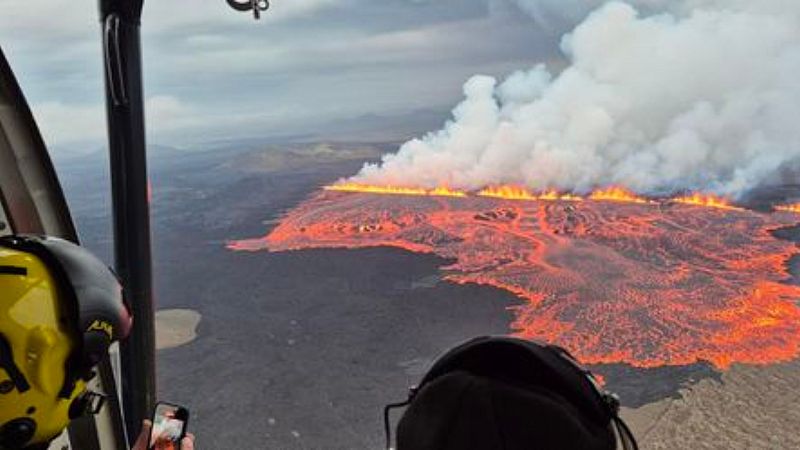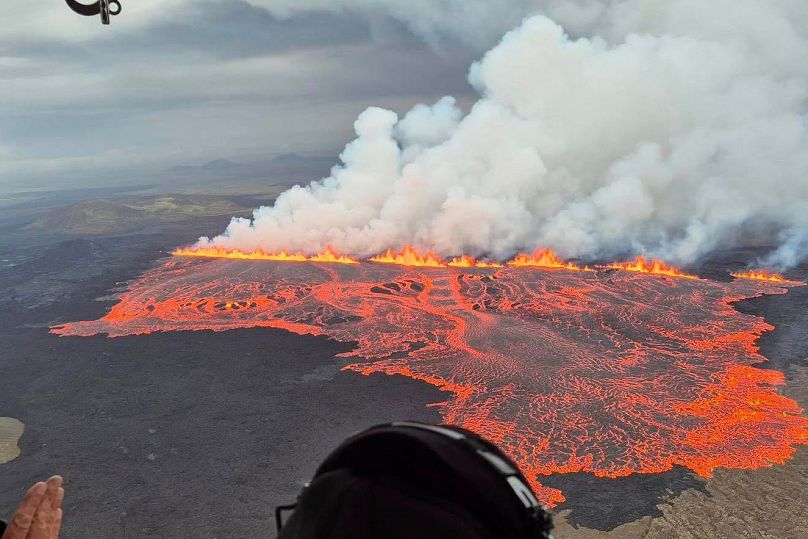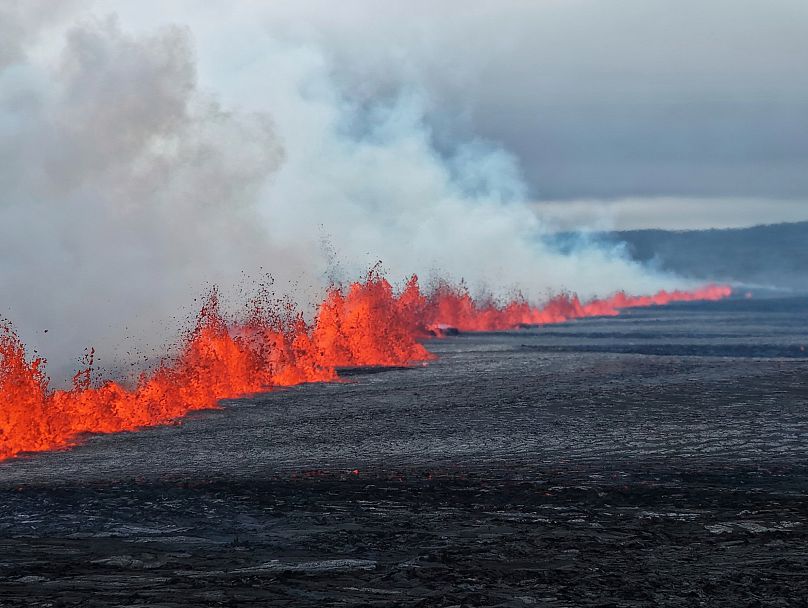Tourists evacuated after Iceland’s Reykjanes Peninsula hit by 9th eruption since 2023

Tourists and locals have been evacuated on Iceland’s Reykjanes Peninsula after the twelfth volcanic eruption in the region since 2021.
The eruption began around 4 am on Wednesday following an intense seismic swarm on the Reykjanes Peninsula, southwest of the capital, Reykjavik, Iceland’s Met Office (IMO) said.
Magma pushed up through the Earth’s crust, opening a fissure near Sundhnúkur crater, thought to be between 700 and 1,000 metres long.
It belched columns of smoke into the air, and dramatic lava flows can be seen in images of the eruption.
On Wednesday evening, the IMO said that while the eruption at Sundhnúksgígar fissure continued, seismic activity had decreased since the morning. The biggest threat to inhabited areas is now from gas emissions and wildfires, which are contributing to local air pollution.
It comes after an eruption in April this year breached protective barriers near the fishing town of Grindavik, causing emergency services to evacuate residents and tourists staying at the Blue Lagoon Spa.
Tourists and residents evacuated
Lava is flowing to the southeast, meaning the eruption doesn’t threaten any infrastructure at this time, the IMO said in a statement, and there is currently no threat to populated areas.
“Based on GPS measurements and deformation signals, it is likely that this was a relatively small eruption.”
Despite this, civil defence teams evacuated people from nearby sites as a precaution. Around 100 residents were cleared from the town of Grindavík. Due to ongoing volcanic activity, the town has remained mostly deserted since its nearly 4,000 residents were evacuated in 2023.
Tourists were also evacuated from a campsite in Grindavík and the Blue Lagoon - a five-star hotel resort famous for its geothermal spa, according to Iceland’s public broadcaster RUV.
Margrét Kristín Pálsdóttir, a local police commissioner, said the evacuation went smoothly and lasted about 90 minutes.
“Of course, people have different opinions on whether the evacuation is necessary, but it is a decision we make and take responsibility for,” she said.
The police commissioner also added that some tourists had been prevented from entering the area.
"Of course, we understand that this is a fascinating event, especially for tourists who are not as accustomed to it as we are."
Residents of Grindavík were allowed back into the town on Wednesday evening. The Blue Lagoon and Northern Light Inn have reopened, but tourists and the general public are not permitted to enter Grindavík.
Have flights been impacted by the eruption?
Flights at the nearby Keflavik airport in the capital of Reykjavik have not been impacted by the volcanic eruption.
With 33 active volcanic systems, Iceland is often referred to as the land of ice and fire. It has recorded a dozen volcanic eruptions since geological systems on its Reykjanes Peninsula reactivated four years ago after an 800-year dormancy.
Experts say these eruptions in the area could continue for decades or even centuries as part of a new volcanic cycle.
Unlike the 2010 eruption of the Eyjafjallajokull volcano, which grounded planes across Northern Europe for almost a week, this recent string of eruptions on Iceland’s Reykjanes Peninsula has not ejected large volumes of ash into the stratosphere. This means that air traffic hasn’t been disrupted.
Volcanic ash is dangerous for aeroplanes because it can cause engine failure and damage to various important aircraft components.



